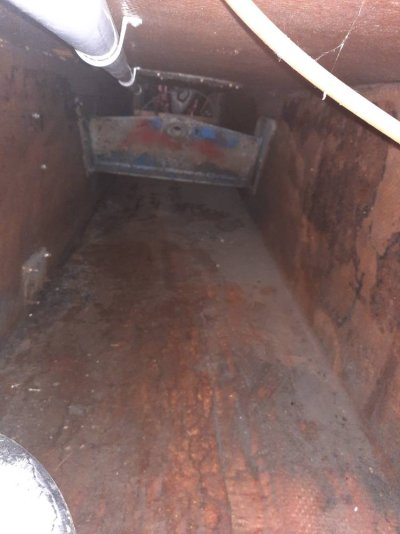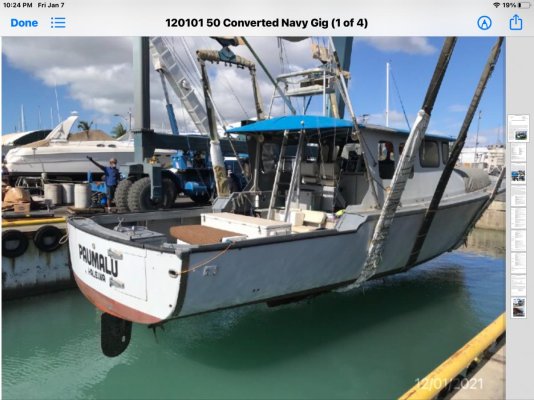Jeff F
Guru
- Joined
- Nov 5, 2015
- Messages
- 2,572
- Location
- Canada
- Vessel Name
- Escapade
- Vessel Make
- 50` US Navy Utility trawler conversion
My new-to-me boat was built as a launch, and has ~190 gallons of fuel capacity in two saddle tanks. I've been examining options for increasing tankage, which leads me to flexible bladders.
Here's a picture facing aft from an access hatch in the ER. The boat was built with tall stringers and a floor that's fully tabbed in, and all systems and fuel tanks above the floor. This box is approximately 30" wide, 22" high and at least 15' between bulkheads. That's a lifting point in the picture.
I'm getting ready to engage with ATL to spec out a pair of bladders. Each would have a dedicated fill and transfer pump to the existing tank, which would be directly above. My basic game plan would be to line the bottom and sides of the space with rubber mat, then squeeze the bladders in without major disassembly of the boat My intention is to keep them full normally. The weight won't hurt me.
I've read lots here about bladders. The consistent objection seems to be with longevity. Baffling is a nagging concern I know that ATL provides foam baffles, but am ignorant of how suitable their system is. The tank will be fully supported on all sides, long and skinny fore and aft.
I appreciate the benefits of fixed tanks, but am not going to cut things open enough to get them in this space.
Comments? Suggestions? Thanks in advance. Jeff
Here's a picture facing aft from an access hatch in the ER. The boat was built with tall stringers and a floor that's fully tabbed in, and all systems and fuel tanks above the floor. This box is approximately 30" wide, 22" high and at least 15' between bulkheads. That's a lifting point in the picture.
I'm getting ready to engage with ATL to spec out a pair of bladders. Each would have a dedicated fill and transfer pump to the existing tank, which would be directly above. My basic game plan would be to line the bottom and sides of the space with rubber mat, then squeeze the bladders in without major disassembly of the boat My intention is to keep them full normally. The weight won't hurt me.
I've read lots here about bladders. The consistent objection seems to be with longevity. Baffling is a nagging concern I know that ATL provides foam baffles, but am ignorant of how suitable their system is. The tank will be fully supported on all sides, long and skinny fore and aft.
I appreciate the benefits of fixed tanks, but am not going to cut things open enough to get them in this space.
Comments? Suggestions? Thanks in advance. Jeff



